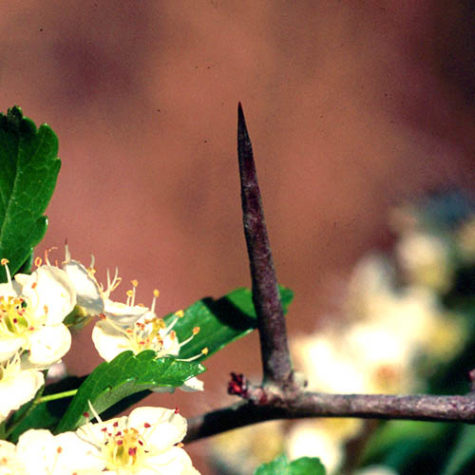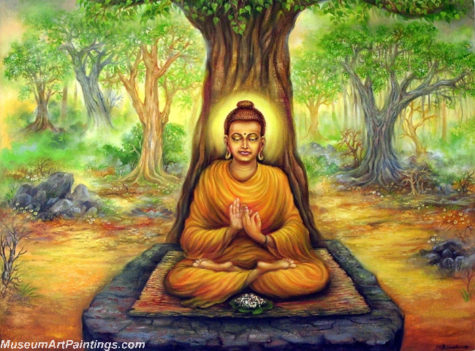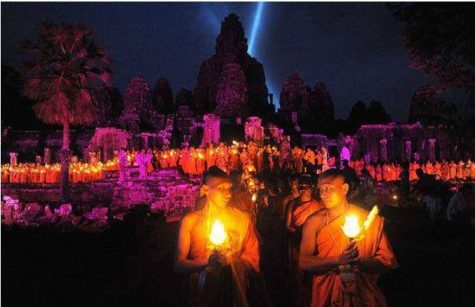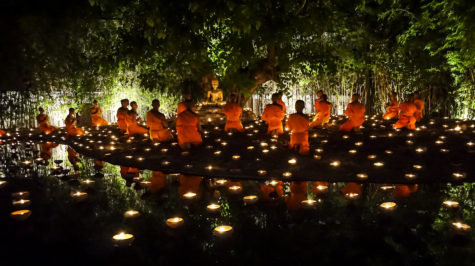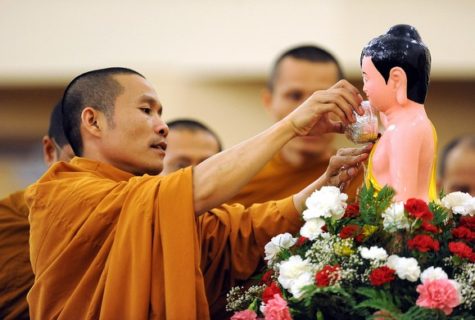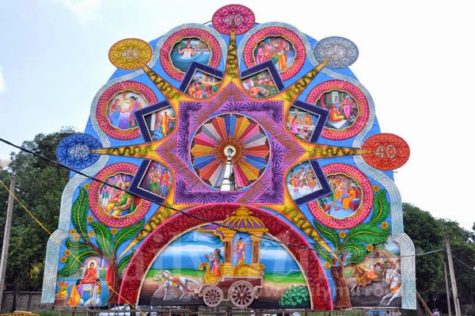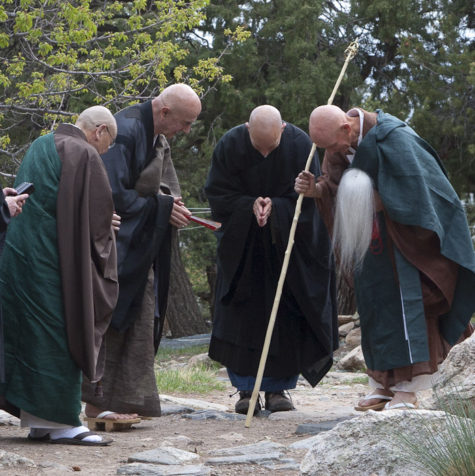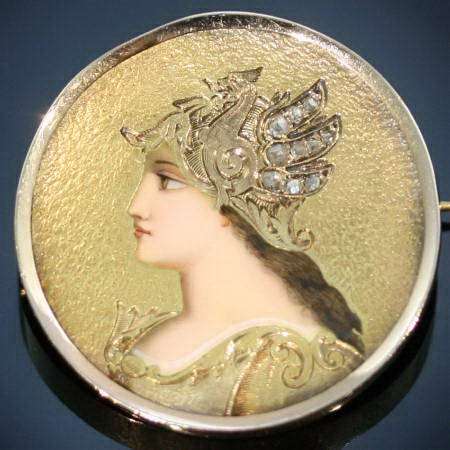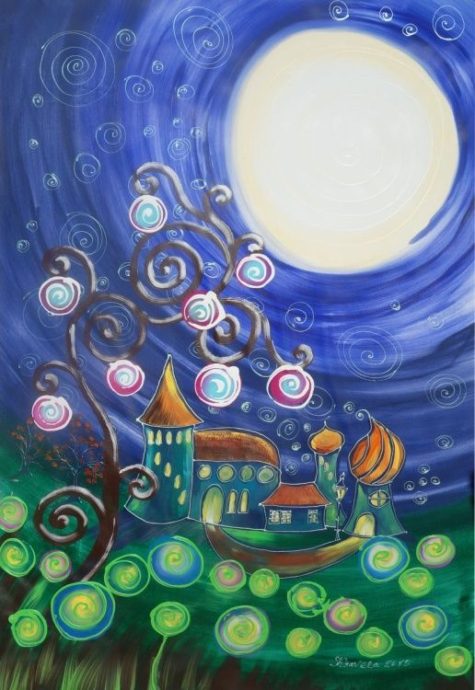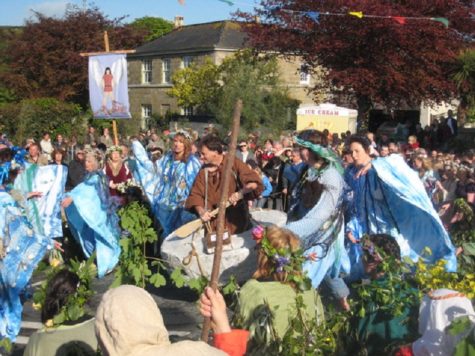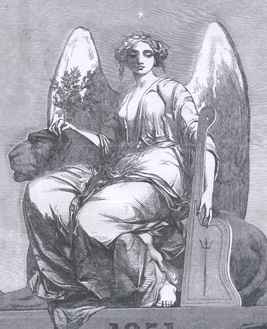Monthly Archives: May 2017
Sacred Thorn Tree Day and the Hawthorn Moon Month begins annually each year on this date, It goes from May 13 – June 9. This is a great time for magic concerning peace, prosperity, protection, fertility and marriage.
The Hawthorn is a prickly sort of plant with beautiful blossoms. Called Huath by the ancient Celts, and pronounced Hoh-uh, the Hawthorn month is a time of fertility, masculine energy, and fire. Coming right on the heels of Beltane, this month is a time when male potency is high — if you’re hoping to conceive a child, get busy this month! The Hawthorn has a raw, phallic sort of energy about it — use it for magic related to masculine power, business decisions, making professional connections.
The druids were said to use it’s leaves and flowers to make medicinal teas. And the wood from the Hawthorn was known to provide the hottest fire. The Greeks and Romans saw the Hawthorn as a symbol of marriage. Although in Medieval Europe, the Hawthorn was associated with witchcraft, and was therefore seen as unlucky.
This magical little tree is also associated with the faeries. When the Hawthorn grows in tandem with an Ash and Oak, it is said to attract the Fae. It is also said that a Hawthorn growing on a hill near a sacred well is a marker for the faery realm.
In Ireland, Hawthorns covered in “clootie” prayer strips guard sacred wells. These are little strips of cloth blessed in the well, and then tied to the tree with a prayer. It was also the custom to hang old clothes on hawthorn bushes all month beginning on this day to avert poverty.
To celebrate the Hawthorn tree, pray to the Goddess Cardea, for the Hawthorn was her sacred tree. She is known as the Goddess who protects the home, put a piece of Hawthorn over any windows or doors in your home for protection from this Hawthorn Goddess.
Collected from various sources including: Paganwiccan and Love of the Goddess
On 10 May, and again on 31 May, the Roman legions at Duro Europa celebrated the Rosalia. This again connects the flowers of Spring with rituals for the dead, only this time the rituals were performed by military units for their fallen comrades rather than for family members. We learn of this celebration first with a military calendar from Syria.
We do not know if the Rosalia was celebrated on the same dates by other legions throughout the Roman Empire, but we hear descriptions of the Rosalia in other texts suggesting that the Rosalia was common in the Roman army. Since the military calendar differs from other Roman calendars, it is possible that it represents a standard used among all legions. Then again each legion may have had its own schedule of festivals. However, since the month of May was dedicated to the dead, with Lemuria, it would seem reasonable that a military equivalent fell within the same month.
Here’s what we do know:
At the center of every Roman military camp there was a small shrine, the saculum. Inside this shrine the military standards were kept; these were the legion’s eagle and other standards for the maniples, cohorts, or vexilia. As with Roman temples, an altar was placed in front of the sacullum. At Rosalia the standards were brought forth and placed around the altar. They were crowned with wreaths of roses and a supplication, or thanksgiving, was performed before them. Beyond that one detail, nothing else is certain about this military ritual. But from its nature we can surmise something of its intent.
When someone died far from home, whether while serving in the army or away at sea, and thus was unable to be buried by his family, a cenotaphium would be erected as a dwelling place for his soul. His Lar (soul) was called three times and invited to enter the cenotaphium. For example, when Aeneas meets his deceased friend Deiphobus in the Underworld, he says,
“Then I myself on the Rhoetean shore erected a hollow tomb, and with loud voice thrice called upon thy spirit (Virgil, Aeneid).”
On the Nones (7 May) the tombs of ancestors were decorated with wreaths of roses. With their red hues, the roses were offered to the dead as a gesture of reviving them, or at least of remembering how they were once while still alive. The red roses were the flowers of Venus, and they were a reminder of the Garden of Venus where the souls of the dead, as animae, would dwell as Her children, like little cupids living in the Blessed Isles. So offering roses to the Manes was a way of wishing their safe journey on to the Garden of Venus.
There is not much doubt that the Rosalia was intended to honor the military dead. The standards were being adorned with roses in the same manner as tombs and cenotaphs. With the Romans I think you would also have to consider that they thought of the standards as cenotaphia that carried the Lares of the legion, who were the spirits of their fellow soldiers, into battle with them. This would also explain why the loss of the eagles would be taken as such a tragedy by Romans. Perhaps it also explains why the second century Christian writer Tertullian criticized this veneration of the standards.
The Rosalia was continued, however, even after the Roman army adopted Christianity. Something of the Rosalia remains even today in the parading of the colors of modern armies, where they are decorated with battle ribbons to commemorate where a unit has fought, as well as all the men who have served and died with the unit in the past. Laying a wreath of roses on the Tomb of the Unknown Soldier on Memorial Day is an echo of the Rosalia once performed by Roman legions.
Found at: Patheos
This is the holiest day of all Buddhist days marking the birth, enlightenment and nirvana of the Lord Buddha. It is celebrated on many different dates, and in many different ways all over the world.
In many east Asian countries Buddha’s Birth is celebrated on the 8th day of the 4th month in the Chinese lunar calendar (in Japan since 1873 on April 8 of the Gregorian calendar), and the day is an official holiday in Hong Kong, Macau, and South Korea. The date falls from the end of April to the end of May in the Gregorian calendar.
In Nepal:
In Nepal, Buddha’s birthday is celebrated on the full moon day of May. In 2017, the holiday occurs on May 10. The festival is known by various names, Buddha Jayanti, Buddha Purnima, Vaishakh Purnima and Vesak. Purnima means full moon day in Sanskrit. Among the Newars of Nepal, the festival is known as Swanya Punhi, the full moon day of flowers. The day marks not just the birth of Shakyamuni Gautam Buddha but also the day of his Enlightenment and Mahaparinirvana. But as a gentle effect of the West, the event of the birth is given paramount importance.
The event is celebrated by gentle and serene fervor, keeping in mind the very nature of Buddhism. People, especially women, go to common Viharas to observe a rather longer-than-usual, full-length Buddhist sutra, as something like a service. The usual dress is pure white. Kheer, a sweet rice porridge is commonly served to recall the story of Sujata, a maiden who, in Gautama Buddha’s life, offered the Buddha a bowl of milk porridge after he had given up the path of asceticism following six years of extreme austerity. This event was one major link in his enlightenment.
It is said that the Buddha originally followed the way of asceticism to attain enlightenment sooner, as was thought by many at that time. He sat for a prolonged time with inadequate food and water, which caused his body to shrivel so as to be indistinguishable from the bark of the tree that he was sitting under. Seeing the weak Siddhartha Gautama, a girl named Sujata placed a bowl of milk in front of him as an offering. Realising that without food one can do nothing, the Buddha refrained from harming his own body.
In India:
The birth of Buddha or Tathagata is celebrated in India, especially in Sikkim, Ladakh, Arunachal Pradesh, Bodh Gaya, various parts of North Bengal such as Kalimpong, Darjeeling, and Kurseong, and Maharashtra (where 6% of total population are Buddhists) and other parts of India as per Indian calendar. The day is celebrated much the same way as in Nepal.
In Thailand:
Visakha Puja, the year’s greatest religious holiday, which commemorates the Buddha’s birth, enlightenment and death, comes during seeding and plowing. This is the holiest day of all Buddhist days marking the birth, enlightenment and nirvana of the Lord Buddha.
Buddhists will make merits and attend sermons at the temples (Wat). In the evening, Buddhist monks lead the laity in a magnificent candle-light triple circumambulation of Buddhist chapels throughout the country.Village elders attend temple celebrations and sermons during the day.
Those who have been working all day in the fields return at dusk to join the lovely candle or torchlit procession that circumambulates the temple chapel three times. Enacted in every village, town and city Wat (temple), each person carries flowers, three glowing incense sticks and a lighted candle in silent homage to the Buddha, his teaching and his disciples.
In Japan:
In Japan, Buddha’s birth is also celebrated according to the Buddhist calendar but is not a national holiday. On this day, all temples hold Kanbutsu-e or Hana-matsuri, meaning ‘Flower Festival’. The first event was held at Asuka-dera in 606.
Japanese people pour ama-cha (a beverage prepared from a variety of hydrangea) on small Buddha statues decorated with flowers, as if bathing a newborn baby.
In Korea:
Lotus Lantern Festival celebrating Buddha’s Birthday, is celebrated in South Korea according to the Lunisolar calendar. This day is called Seokga tansinil, meaning “Buddha’s birthday” or Bucheonim osin nal meaning “the day when the Buddha came.”.
Lotus lanterns cover the entire temple throughout the month which are often flooded down the street. On the day of Buddha’s birth, many temples provide free meals and tea to all visitors. The breakfast and lunch provided are often sanchae bibimbap.
In Sri Lanka:
This is one of the major festivals in Sri Lanka. It is celebrated on the first full moon day of the month of May. People engage in religious observances and decorate houses and streets with candles and specially made paper lanterns. some stores give out free meals for people.
In specific places, there are buildings made out of light bulbs but from a distance it represents pictures from the Buddha’s life. They are called vesak thorun (Pandals). People sing songs called “bhakthi geetha”.
United States:
Among the many practicing Buddhists in the United States, Buddha’s Birthday (Hana-Matsuri) is widely celebrated on April 8 of the standard Gregorian calendar.
In 1968 on April 8 in the California Bay Area, the first circumambulation of Mt. Tamalpais to celebrate Buddha’s Birthday was conducted. The director of the Esalen at Stanford program designed a leaflet and had it distributed to all universities in the Bay Area. Some brought sleeping bags and slept overnight in Muir Woods to enable an early start up the Dipsea Trail.
For the several hundred people involved, it was an unforgettable day clear, sunny, calm, and somewhat warm. Gary Snyder, Allen Ginsberg, and Philip Whalen were there. Taught by Gary and Allen, we chanted a different mantra at every station of the clockwise circumambulation. We all stopped for lunch on a sunny hillside. Allen brought miso for lunch, and he passed it around for others to enjoy.
Starting in 1969 on April 8 (and into the 1970s) at Tassajara Zen Mountain Center, Hana-Matsuri was celebrated each spring. Dressed in formal black robes, the roughly 70 monks and students formed a formal procession to the Horse Pasture with the leader periodically ringing a small, clear bell.
A temporary stone altar was built under a huge oak tree in a gorgeous field of green grass and abundant wildflowers; a small statue of a baby Buddha was placed upon it in a metal basin. Then each person would in turn approach the altar, ladle one thin-lipped bamboo dipperful of sweet green tea over the statue, bow, and walk to one side. How haunting and mysterious – the juxtaposition of formality, ritual and wild Nature.
Other countries:
Some places have a public holiday one week later, on the fifteenth day of the fourth month in the Chinese Lunar Calendar, to coincide with the full moon. The names for this festival vary with each country, for instance Visakha Puja in Thailand or Lễ Phật đản in Vietnam. In some countries it is a public holiday, in others it is not.
The May full moon is also known as the Flower Moon, Milk Moon, Corn Planting Moon, and Corn Moon. The energies around this moon are ones of health, romance, love and wisdom. We are encouraged to begin to take action on the things we’ve recently been planning.
Once April’s rains and winds have subsided, the sun begins to warm up the earth and we’re able to get the gardens planted. Thus May is the month we begin to sow our crops. Get out in the garden under a Flower Moon and put your hands into the soil. May’s Moon brings us energy of love, wisdom and health. Spring is a time of fertility, and May is a fiery month indeed — full of lust and passion! It’s called the month of the Hare’s Moon — and we all know what hares are busy doing in the spring.
Correspondences:
- Colors: Red, orange, yellow
- Gemstones: Ruby, garnet, amber, Apache tear
- Trees: Hawthorn, rowan
- Gods: Kali, Priapus, Cernunnos, Flora
- Herbs: Cinnamon, members of the mint family
- Element: Fire
Gems and oils to boost the energy of the Hare’s Moon
- Gemstones: Malachite, Jade, Emerald, Peridot or any other green-hued stones.
These gems help enhance the energy of the heart chakra, which governs our compassion, generosity, love and harmony. If you need a boost in any of these areas, simply slip a green stone into your pocket, or put on a piece of green-gemmed jewelry.
- Essential Oils: Eucalyptus, Thyme, Sandalwood, Pine, Melissa, Bergamont.
These oils will help you connect with your unconscious mind and set the intention of love, wisdom and compassion
Celebrating The May Full Moon
The May full moon is a time when we begin to really notice more light in our lives. The days are longer, the grass is green and the flowers are starting to bloom. The energy at this time is playful and light, energetic and buoyant. If you want to really celebrate this moon and the energy it brings, you can do fun things like:
- host a pot-luck with a spring theme
- visit your local elementary school and volunteer during art class
- light a green candle and meditate on your thankfulness for the feeling of renewal and rejuvenation.
Other ideas:
Another great way to connect with the Hare’s Moon is to bless some seeds, seedlings or garden plants, and then plant them. Doing this involves intentionally adding positive energy to these plants, and then nurturing their growth and health. This is a powerful symbolic exercise that will help you focus your energy on intentionally giving “good vibes” to your environment. Doing this will make you feel empowered, positive and loving.
This is also a good time to work on magic related to careers and jobs. Thinking about switching to a new position, or perhaps trying a new field altogether? Want to take a class or get your degree? Take the seeds you’ve planted last month, and allow them to bloom and grow in your favor. Do some fire divination this month to help guide you on your way.
source: PaganWiccan
The Lemuria, the festival in honor of the Lemures, the spirits of dead family members who wander the earth on these three spring nights (May 9, 11, and 13).
The Lemuria is held on odd-numbered days because even-numbered days are considered unlucky. It is a festival designed to honor the Lemures, they are regarded as baleful spirits of the dead who died violent or otherwise untimely deaths.

At midnight, the Paterfamilias (head of the household) arises and dresses with no knots, buckles, or other constricting items on his person (thus he is barefoot). He makes the sign of the mano fico with his hands (a fist with the thumb placed between the index and middle fingers; a sign of good luck and fertility) and then washes his hands in pure water. He then walks through the house, spitting out nine black beans, being careful not to look behind him as the lemures accept the beans as a sort of ransom for the living members of the household. As he spits out each one, he says
“With these beans I redeem me and mine.”
Once all nine beans have been accepted by the lemures and the entire house walked through, the Paterfamilias then washes his hands again, clashes two vessels of bronze together, and nine times says
“Ghosts of my fathers, be gone.”
(Manes exite paternae.)
Source: Novaroma
According to many pagan calendars, May 8th is listed as “The Festival of Mens , the Roman goddess of mind and consciousness.” I did not, however, find any information on Mens or on a festival of Mens – what I did find was this small excerpt at Wikipedia:
By a process of folk etymology, the Romans could have confused the phones of her foreign name with those of the root men- in Latin words such as mens meaning “mind”, perhaps because one of her aspects as goddess pertained to the intellectual. The word mens is built from the Proto-Indo-European root *men- ‘mind’ (linked with memory as in Greek Mnemosyne; memory, remembrance, recollection, Manush in Sanskrit meaning mind ).
Because of this, I can only assume that the Festival of Mens is actually a Festival of Minerva, Goddess of wisdom and learning, meditation, inventiveness, accomplishments, the arts, spinning and weaving, and commerce. Minerva was identified with Pallas Athene, bestower of victory, when Pompey the Great built her temple with the proceeds from his eastern campaigns.
The Romans celebrated her festival from March 19 to March 23 during the day which is called, in the neuter plural, Quinquatria, the fifth after the Ides of March, the nineteenth, an artisans’ holiday. A lesser version, the Minusculae Quinquatria, was held on the Ides of June, June 13, by the flute-players, who were particularly useful to religion.
Source: Wikipedia
For the purpose of your magical escapades, the theme is definitely blossoming and liveliness. Use as many flower parts as possible in spells and rituals, and go outside frequently to get closer to nature. Energies emphasized by this month include creativity, inventiveness, fertility, health, and metaphysically “spring cleaning” any area of your life or sacred space.
Bring me my drum and bring me my cymbal,
Bring forth the sustrum, bring forth the timbal.
Dance now for Hathor, celebrate beauty,
dance in Her honor, sing for our lady.
May gets its name from the Roman goddess Maia, who embodies the earth’s renewal during spring. Next to New Year’s Eve, May Day was among the most popular holidays in the old world, marking the time when the sun’s warmth and nature’s fertility began appearing in the land. Later, well over one hundred nations chose to celebrate Labor Day on May 1, giving everyone a much-needed rest from winter’s tasks.
The Greek goddess Maia, the most important of the Seven Sisters (the Pleiades) and said to be the mother of Hermes, gave the name to this month. Some form of this goddess’s name was known to people from Ireland to as far away as India. The Romans called her Maius, goddess of Summer and honored her at the Ambarvalia, a family festival for purification and protection of farm land.
In the Celtic cultures, May was called Mai or Maj, a month of sexual freedom. Green was worn during this month to honor the Earth Mother. May 1 was the Celtic festival of Beltane, a festival celebrating fertility of all things. Cattle were drivien through the Beltane bonfires for purification and fertility. In Wales, Creiddylad was connected with this festival and often called the May Queen. The maypole and its dance is a remnant of these old festivities.
The Sheila Na Gig is still seen carved in the decorations of many Irish churches. This goddess figure is a grotesque, often emaciated, woman shown squatting and holding wide her private parts. Many Irish still know her as the protector of the poor and hang old clothes on hawthorn bushes on May 4th. This is believed to avert poverty. It is possible that the Australian term “Sheila,” used as a name for any woman, refers to this ancient deity and her carvings.
Bona Dea, the Roman Good Goddess, had her festival on the night between may 2nd and 3rd. No men were allowed to attend.
The Roman festival of Lemuria was to placate and remember the Lemures, or the wandering spirits of the dead. Each family performed its own private ceremonies, which ended with taking gifts to the graves. For those who had died and had no graves, the head of the household walked barefoot through the house, casting nine black beans behind him.
The Greeks had a special festival for the god Pan during May. Pan was a wild looking deity, half man, half goat. As a token of his frequent sexual adventures, he was shown with an erect penis. Pan invented the syrinx, or pan-pipes, made out of reeds. Originally, he was not an oppressor of women, but their loving companion.
May 19-28 was the solemn Greek festival called Kallyntaria and Plynteria. This was devoted to the cleaning and freshening of sacred statures and temples. The statues, small enough to be moved, were taken to a nearby river or lake and washed until clean. This was serious business with no singing or merry-making.
At the end of the month was a Roman celebration honoring the Underworld Queen Prosperina and her consort Pluto. Proserpina ruled over the resting place of the shades (souls), but her kingdom was connected with more than death. Pluto was also known as the deity of hidden wealth.
In Finland, May 1 was celebrated as Rowan Witch Day, a time of honoring the goddess Rauni, who was associated with the mountain ash or rowan. Twigs and branches of the rowan were, and still are, used as protection against evil in this part of the world. Some sources list Rauni as a god.
The Slavonic-Russian cultures had a similar, but longer, festival celebrating merriment, rivers, and well-being. This occured between May 25 and June 25. Originally it honored the goddess Lada, who later was changed to the god Lado.
Mugwort was a sacred herb in China and Europe. As part of the celebration on May 5, the Chinese made dolls out of the leaves. They hung these dolls above gates and doors to repel negative influences and entities.
In Tibet, an old Nature festival for the beginning of Summer and the rain deities became a celebration of Buddha’s death and his attainment of Buddha-hood. The attainment festival occurred on May 8, while celebration of Buddha’s death was on May 15. Deceased relatives were prayed for at this time.
The Incas held Aymoray Quilla or Hatun Cazqui, which was the Great Cultivation.
From: Moon Magick
What follows is a list (in alphabetical order) of the names given to the May moon. Also listed is the tradition and/or origin of that moon name:
Alewive Moon ~Passamaquoddy
Big Leaf Moon ~Mohawk
Blossom Moon ~Anishnaabe
Bright Moon ~Celtic
Corn Planting Moon ~Taos, Algonquin
Corn Weed Moon ~Agonquin
Dyad Moon ~other
Fat Horses Moon ~Cheyenne
Field Maker Moon ~Abernaki
Flower Moon ~other
Frog Moon ~Cree
Frogs Return Moon ~other
Grass Moon ~Neo Pagan
Green Leaf Moon ~Apache
Green Leaves Moon ~Dakota
Hare Moon ~Medieval English
Hoeing Corn Moon ~Winnebago
Idle Moon ~Assiniboine
Joy Moon ~other
Leaf Tender Moon ~San Juan
Little Corn Moon ~Natchez
Merry Moon ~other
Milk Moon ~Colonial American, Algonquin
Mothers Moon ~Janic (full)
Mulberry Moon ~Greek
Ninth Moon ~Wishram, Janic (dark)
Panther Moon ~Choctaw
Planting Moon ~Cherokee
Ponies Shed Moon ~Sioux
Shaggy Hair Moon ~Arapaho
Sproutkale Moon ~other
Strawberry Moon ~Potawatomi
Waiting Moon ~Hopi
The Furry Dance, also known as The Flora (or incorrectly as the Floral Dance), takes place in Helston, Cornwall, and is one of the oldest British customs still practiced today. The Dance takes place every year on May 8 (or the Saturday before if May 8 falls on a Sunday or Monday), and is a celebration of the passing of Winter and the arrival of Spring.
The dance is very well attended every year. Winter’s gone, so everybody’s out in the streets to celebrate the new life springing up all around. It seems like the whole of Cornwall is lining the streets, all freshly decorated with colourful flowers
The four dances and a Hal-an-Tow (a mystery play), spread across the day, starting with the first dance at 7.00 am, continuing with the children’s dance at 10.00 am, then the midday dance and culminating in the evening dance at 5.00 pm. Of these, the midday dance is perhaps the best known: it was traditionally the dance of the gentry in the town, and today the men wear top hats and tails while the women dance in their finest frocks.
The Dance twists and turns its way through this ancient Cornish town and the route doesn’t change, even if that means that the Flora Dance has to traipse through people’s houses, across their gardens or straight through the shops.
The whole town is decorated with greenery, many of the people are wearing greenery outfits and the Town Band play all day long, providing music to the dancers, they have a splash of greenery in their hats too, you’ll notice this is Lily of the Valley, which is Helston’s symbolic flower. The gentlemen wear it on the left, with the flowers pointing upwards, and the ladies wear it upside down on the right.
Originally, most likely, a May Day celebration, it was moved to May 8th to commemorate the town’s patron saint, St Michael, who is said to have saved the town from what appears to be a meteorite hit in AD 495, you can still see the boulder that crashed down as it’s still visible as a wall in the Angel Yard.
Source: Cornish Festivals
Have Your Own Furry Dance:
The Furry Dance is an ancient festival that rejoices in spring’s warmth and beauty. To bring this energy into your life, it’s customary to dance with a partner. In fact, the more people you can get dancing, the more fortunate the energy! Usually this is done on the streets throughout a town as a show of regional unity, but when propriety won’t allow such a display, just dance around a room together instead. Don’t worry about the steps – just do what feels right.
- Themes: Unity; Joy; Luck
- Symbols: Flowers; Triangle
- Presiding Goddess: Tanat
In Cornwall, Tanat is the mother goddess of fertility who has given all her attention to nursing spring into its fullness. She also staunchly protects her children (nature and people) so that our spirits can come to know similar fulfillment.
Wearing something with floral or triangular motifs (guys, wear a necktie, and gals, pull out a square scarf and fold it crosswise) activates Tanat’s happiness in your life and in any region where you have the token on today. As you don the item, say:
Liberate happiness in and around,
by Tanat’s blossoming power, joy will be found!
Or if you want to use the same thing to generate unity and harmony, use this incantation:
Harmony and unity,
Tanat’s blessings come to me.
From: 365 Goddess
The Bona Dea had a festival on the first of May that commemorated the date her Aventine temple was founded. Its date connects her to Maia; its location connects her to Rome’s plebeian commoner class. At the ceremony, prayers were made to Her to avert earthquakes. She also had a secret festival, attended only by women, that took place over the night of the 3rd and 4th of May.
The rites are inferred as some form of mystery, concealed from the public gaze and, according to most later Roman literary sources, entirely forbidden to men.
On this night the festival was held in the house of the consul (the chief elected official), and no men were allowed. This taboo extended even to paintings or statues of men, which were required to be covered during the rites—and one assumes the consul himself crashed at a friend’s place for the night. The Vestal Virgins officiated, led by the wife of the consul (probably symbolic of the ancient Queen, on whom fell certain sacred religious duties), and the house was decorated like a temple with garlands of leaves and flowers of all kinds, except for myrtle of course, and the women wore wreaths of grape leaves.
A great jar of wine was placed in the room, though it must be referred to as “milk”, and the jar itself was called a mellarium, or “honey jar.” After making libations to the Goddess, music was played and the women drank and danced.
In the Republican era, Bona Dea’s Aventine festivals were probably distinctly plebeian affairs, open to all classes of women and perhaps, in some limited fashion, to men. By the Late Republic era, Bona Dea’s May festival and Aventine temple could have fallen into official disuse, or official disrepute.
The goddess also had a Winter festival (see it here), it was held in December during the Faunalia, and was referred to as the sacra opertum, (“the secret or hidden sacrifice”): at this ritual sacrifices were made for the benefit of all the people of Rome, something proper to the realm of a mother or Earth Goddess who is concerned with the well-being of all of Her children.
Ritual for Bona Dea:
- Color: Green
- Element: Earth
- Offerings: Leave a pig-shaped cookie out for the wild things.
- Daily Meal: Soups or stews, preferably with herbs. Herbal tea.
Altar:
Upon a green cloth set five candles in different colors, a chalice of milk mixed with honey, incense of sandalwood and myrrh, the figure of a snake, a plate of cookies shaped like pigs, a pot of medicinal herbal tea, cups, and pots of dried herbs gathered throughout the year.
Invocation to Bona Dea
O Bona Dea,
Good Goddess of the Earth
Whose name is mystery,
Whose name is a hundred names,
Whose spirit lives in us all
And in every goddess who touches the soil,
And in every mortal who sprang from the clay,
Be with us on this day!
You have made the Earth spring forth
With many green goods for us,
Not merely those with which me feed our bellies,
But also those which heal our bodies.
Lady who heals us, godmother of Hygeia,
Daughter of Faunus who tracks in the wild,
We find your gifts both in our gardens
And on the wild paths where you have trodden.
We see the healing herbs springing up
In each of your passing footprints,
And we are grateful for our lives.
O Bona Dea,
Good Goddess of the Earth
Whose name is mystery
But whose gifts are so concrete,
We revere you and ask that you bless this day
Your plants which you have so generously given us,
That we may always be healed
And always help to heal others.
The names of the herbs that were collected and placed on the altar are called out one by one, in this manner:
“For the power of Rosemary, we are grateful!”
All reply in turn, “We are grateful!”
Pass the tea and cookies and eat them.
Sources: Pagan Book of Hours and Wikipedia
